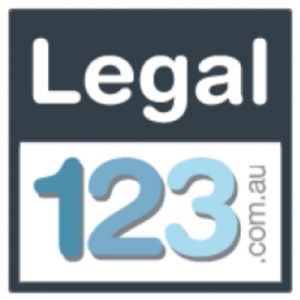
by Anne Clark | Aug 21, 2024 | Business, Digital Marketing
Nurturing leads through email is crucial for building relationships and guiding potential clients toward making a purchase. In this third part of my series, I explore strategies for creating effective email campaigns that keep your leads engaged.
1. Segment Your Email List
- Define Segments: Categorise your leads based on criteria such as their interests, behaviour, or stage in the sales funnel. For example, segment leads who downloaded a specific lead magnet versus those who attended a webinar.
- Personalised Content: Tailor your email content to each segment’s needs and preferences. Use dynamic content to show different information based on the recipient’s segment.
2. Create a Welcome Series
- Initial Email: Send a warm welcome email that thanks the subscriber for joining and sets expectations for what’s to come.
- Follow-Up Emails: Include a series of emails that provide valuable content, introduce your brand, and offer additional resources or offers.
- Engagement Triggers: Encourage interaction with CTAs such as surveys, feedback requests, or special offers.
3. Provide Value with Regular Content
- Educational Content: Share useful tips, insights, or resources that address your leads’ pain points. For instance, if you offer consulting services, send emails with actionable business strategies.
- Exclusive Offers: Provide special promotions or discounts to keep your audience engaged and incentivise them to take action.
- Updates and News: Keep leads informed about your latest products, services, or industry news that may interest them.
4. Use Personalisation Techniques
- Personalised Greetings: Address recipients by their first name and refer to their specific interests or interactions.
- Tailored Recommendations: Suggest products or services based on their previous actions or preferences.
5. Implement Behavioural Triggers
- Automated Emails: Set up triggers based on user actions, such as visiting a specific page or downloading a resource. For example, send a follow-up email with related content if a lead downloads a free guide.
- Abandoned Cart Emails: For e-commerce businesses, send reminders to leads who have added items to their cart but haven’t completed the purchase.
6. Monitor and Optimise Performance
- Track Metrics: Analyse open rates, click-through rates, conversion rates, and other key metrics to assess the effectiveness of your email campaigns.
- A/B Testing: Test different email subject lines, content formats, or CTAs to determine what works best for your audience.
- Feedback and Adjustments: Gather feedback from subscribers and adjust your strategy based on their responses and engagement patterns.

by Anne Clark | Aug 14, 2024 | Business
Following up on my last post, Part 1: Effective Lead Generation Techniques, I am exploring landing pages where your leads land after clicking on your CTA. Its design and content play a crucial role in converting visitors into leads. In this second part of our series, I’ll explore how to create landing pages that captivate and convert.
1. Craft a Compelling Headline
- Clarity: Ensure your headline is clear and directly related to your offer. For instance, “Get Your Free Guide to Mastering Social Media Marketing” clearly states what’s being offered.
- Action-Oriented Language: Use action verbs to encourage immediate action. For example, “Discover the Secrets to Skyrocketing Your Sales” is more engaging than “Learn About Sales Techniques.”
- Benefit-Focused: Highlight the main benefit of your offer. For instance, “Unlock Strategies to Double Your Revenue” focuses on the outcome your audience desires.
2. Write Persuasive Copy
- Benefit-Driven Content: Focus on how your offer solves the visitor’s problem or adds value. Use bullet points to list key benefits or features.
- Emotional Appeal: Connect with your audience on an emotional level by addressing their pain points or aspirations.
- Social Proof: Include testimonials, reviews, or case studies to build trust. For example, “See how Jane Doe increased her leads by 50% using our strategies.”
3. Design for Clarity and Simplicity
- Minimalist Layout: Use a clean, uncluttered design to keep the focus on your offer and CTA. Avoid distractions like excessive links or unrelated content.
- Easy Navigation: Ensure users can easily understand how to proceed. Use simple and intuitive navigation if your landing page includes multiple sections.
4. Incorporate High-Quality Visuals
- Relevant Images: Use images or videos that enhance your message. For example, if you’re offering a guide on website optimisation, include screenshots or graphics related to web design.
- Professional Quality: Ensure all visuals are high-resolution and professionally designed to reflect the quality of your brand.
5. Optimise for Mobile Devices
- Responsive Design: Ensure your landing page adjusts seamlessly to different screen sizes. Test on various devices to confirm a smooth user experience.
- Mobile-Friendly Features: Use large, easily clickable buttons and avoid long forms that are cumbersome to complete on mobile devices.
6. Implement Tracking and Analytics
- Set Up Tracking: Use tools like Google Analytics or Facebook Pixel to track user interactions and conversions on your landing page.
- Analyse Data: Regularly review performance metrics to understand how well your landing page is converting and identify areas for improvement.

by Anne Clark | Aug 7, 2024 | Business, Email Marketing
Over the next four articles, I will outline Effective Lead Generation Techniques, including crafting irresistible lead magnets, designing high-converting landing pages, nurturing leads through effective email campaigns, and converting leads into clients – strategies and best practices.
Part 1: Crafting Irresistible Lead Magnets
Lead magnets are essential tools for attracting and capturing potential clients. They offer something of value in exchange for contact information, helping you build a list of engaged leads. This first part of my series will explore creating lead magnets that truly resonate with your target audience.
1. Understand Your Audience’s Pain Points
-
Conduct Research: Use surveys, focus groups, or social media polls to gather insights on what problems or challenges your audience is facing. For example, if you run a business coaching service, find out if your audience struggles with time management or client acquisition.
-
Analyse Competitor Offerings: Review what lead magnets your competitors are using and identify any gaps or opportunities to provide something unique or more valuable.
-
Create Buyer Personas: Develop detailed profiles of your ideal clients, including their demographics, interests, and pain points. Use these personas to tailor your lead magnet to meet their specific needs.
2. Choose the Right Type of Lead Magnet
-
E-books and Guides: Write comprehensive content on a topic your audience finds valuable. For instance, if you offer digital marketing services, create an e-book titled “10 Proven Strategies to Boost Your Online Presence.”
-
Checklists: Design a step-by-step checklist that simplifies a complex task. An example could be “The Ultimate Checklist for a Successful Product Launch.”
-
Templates: Provide downloadable templates that save time and effort, such as “Social Media Post Templates for Small Business Owners.”
-
Webinars and Workshops: Host a live or recorded session on a relevant topic. For example, “How to Build a High-Converting Sales Funnel” could attract leads interested in improving their marketing strategies.
-
Free Trials or Samples: Offer a limited-time trial of your product or service. For instance, a free trial of your software or a sample of your consulting services can give potential clients a taste of what you offer.
3. Design for Value and Appeal
-
Visual Design: Use professional design tools or hire a designer to create a visually appealing lead magnet. Ensure it aligns with your brand’s aesthetics and is easy to navigate.
-
Compelling Headlines: Craft headlines that clearly communicate the benefit of the lead magnet. For example, “Unlock the Secrets to Growing Your Business Online” is more compelling than “Free E-book.”
-
Content Quality: Ensure the content is well-researched, valuable, and actionable. Avoid fluff and focus on providing real solutions or insights.
4. Create a Strong Call-to-Action (CTA)
-
Clear Instructions: Your CTA should guide the user on exactly what to do next, such as “Download Now” or “Sign Up for Free.”
-
Highlight Benefits: Emphasise what the user will gain by taking action. For instance, “Get Instant Access to Proven Strategies for Increasing Your Sales.”
-
Placement: Position your CTA prominently on your landing page or within your content to ensure it catches the user’s eye.
5. Test and Optimise
-
A/B Testing: Create different versions of your lead magnet to test which performs better. For instance, you could test two different e-book titles or formats.
-
Collect Feedback: Ask users for feedback on your lead magnet to understand what they liked or what could be improved.
-
Monitor Performance: Track metrics such as download rates or sign-up conversions to gauge the effectiveness of your lead magnet and make necessary adjustments.
If you need help building your lead magnets, please feel free to reach out and learn more about how I can support you.












